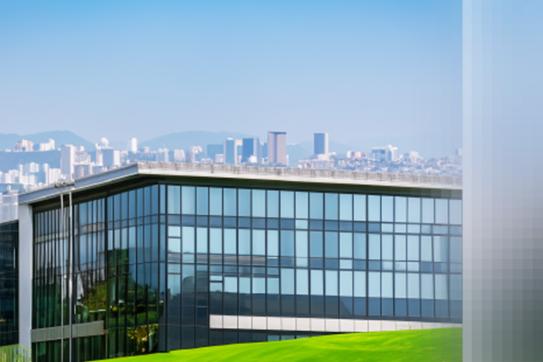The marketplace is an ancient institution, nearly as old as currency itself. So how can modern technology make it better?
That’s the driving force behind this year’s 8th annual Marketplace Innovation Workshop, an event focused on improving our understanding of markets. Co-founded by Columbia Business School Dean Costis Maglaras, the workshop explores new ways to design the traditional marketplace in the modern technological landscape, with the aim of gaining new understandings about consumers’ decisions and optimizing their interactions with markets. “It’s all about matching supply and demand in a more efficient way,” says Fanyin Zheng, who helped organize the event for three years as an assistant professor in the Decision, Risk, and Operations Division at CBS.
The rapid advance of technology in the past few years has consistently introduced novel questions to the workshop, particularly around blockchain technology and artificial intelligence (AI). This year, research topics spanned everything from blockchain auctions and non-fungible token (NFT) marketplace design to the ways AI can be used to overcome the gender wage gap.
Zheng and her students, who have presented their research at the workshop, have had a front-row seat to some of the latest ideas in marketplace innovation, including ways technologies like AI are changing the overall landscape — not just economically but environmentally and socially as well.
More Than a Store
At its core, a marketplace is any mechanism for matching the supply of a good or service with its demand. But marketplaces aren’t just vendors and consumers. “We tend to overlook a marketplace when there are no prices,” Zheng says. “For example, health care systems are marketplaces. We have health care resources in the hospitals — available beds or doctors and nurses — and we need to try to match them with patients.”
Other examples of cashless marketplaces include refugee placement and organ transplantation. The United Network for Organ Sharing, for instance, is essentially a matching market, Zheng says. “People have been working to try to make this marketplace more efficient so no organs get wasted. In other words, how do we save more lives with the same number of organs available?”
Bringing Tech into an Ancient Practice
Modern technology has transformed the way markets function, turning them into complex platforms that match consumers with products, from browsing Amazon to bidding in NFT auctions. Zheng’s recent research at CBS, “Improving Match Rates in Dating Markets Through Assortment Optimization,” examined a market that has been utterly transformed by technology: dating.
Dating apps are essentially structured in one of two ways: a decentralized marketplace (like Tinder, which allows you to freely browse potential matches) or a centralized marketplace (like Bumble, which selects potential partners for you to view). In her research, Zheng explored possible avenues to improve the efficacy of centralized dating platforms. She discovered what she calls a “history effect,” where a customer’s past behavior and results on the app significantly changes how they use the app in the future.
“We found that if a user had a high number of matches in their previous session, they become more selective when they see the next batch of profiles,” she explains. “One explanation is a psychological effect: As people get successful matches, they think, ‘Oh, perhaps I'm kind of popular and I can afford to be a bit picky.’ So the likelihood of them liking someone on the app is much lower if they’ve had a few matches in the recent past.”
Even in a human-based market, it still comes down to supply and demand. Restricting supply is an effective tool here, she says: “If I’m running a dating app and I have a lot of good candidates for a particular user, I don't want to show all of them all at once. I want to space it out a little bit, to increase demand.”
Reimagining the Role of the Marketplace
Many of the most exciting conversations around marketplace optimization, Zheng says, are about the ways markets can influence some of the biggest social and environmental challenges. “In the past year or so, a lot of people have been particularly excited to work on climate change and energy markets — tools or technologies to incentivize innovation and also incentivize companies to consider efficiency and energy consumption into their long-term growth objectives,” she says.
Zheng points to the marketplace of carbon emissions permits, commonly known as cap and trade. To manage carbon emissions, governments will establish a cap for the acceptable amount of carbon emissions in a region. They will then issue “emission permits” to companies that allow them to emit a portion of that total. If a company wants to use more than that allotment, they have to trade (pay) for a permit from another company, turning emissions into a marketplace. “By doing that, the price of emissions is going to be higher, hopefully encouraging companies to produce less greenhouse gas,” Zheng says.
Another development Zheng finds particularly intriguing: AI advances that present new and evolving opportunities for marketplaces to promote equity. Conference plenary speaker Joaquin Quiñonero Candela, LinkedIn’s technical fellow for AI, presented some of his work on responsible AI in labor marketplaces. By teaching AI algorithms to be more aware of fairness, he says, companies like LinkedIn can help cultivate diversity and equity in the candidates that are recommended to employers.
Looking forward to next year’s workshop, Zheng says she is excited to see how the relationships between AI and marketplaces evolve. “We want to see how powerful this technology could get,” she says, “but at the same time, use the technology in a responsible way.”
In this video, CBS’s Norman Eig Professor of Business Eric J. Johnson shares insights from his research into how the structure of choices affects outcomes:
